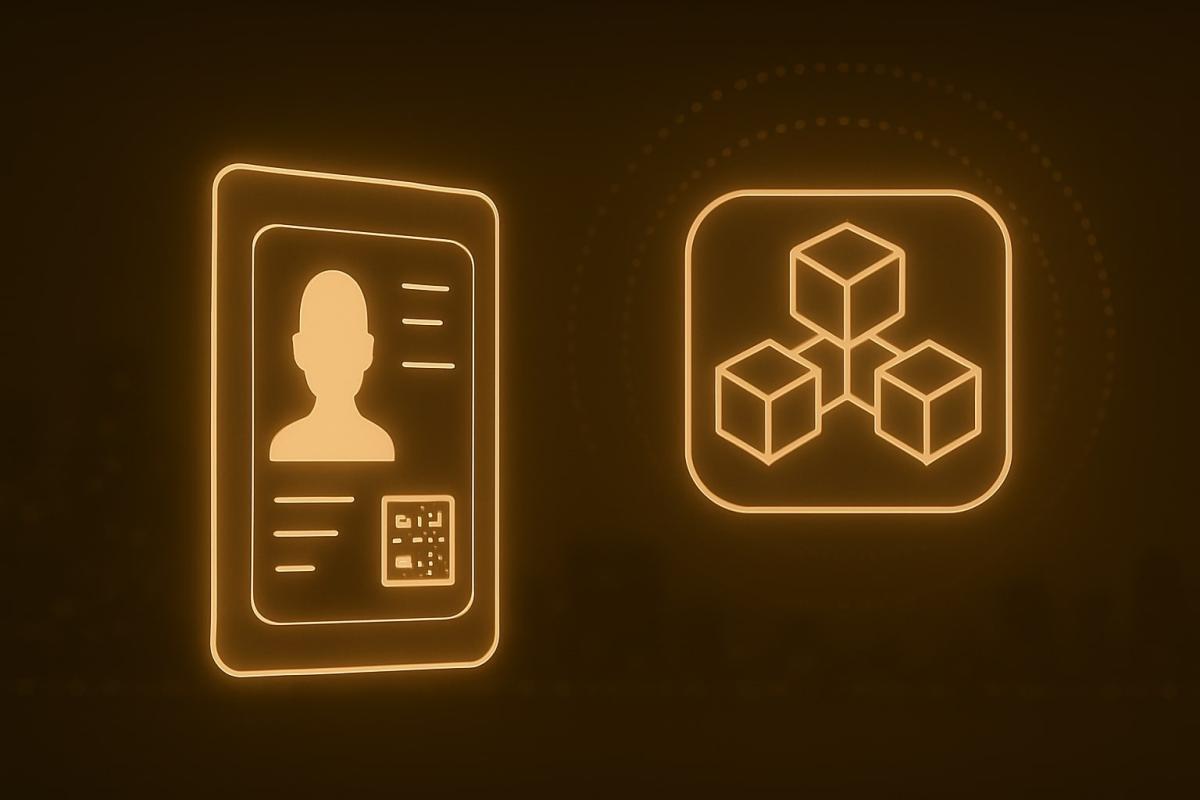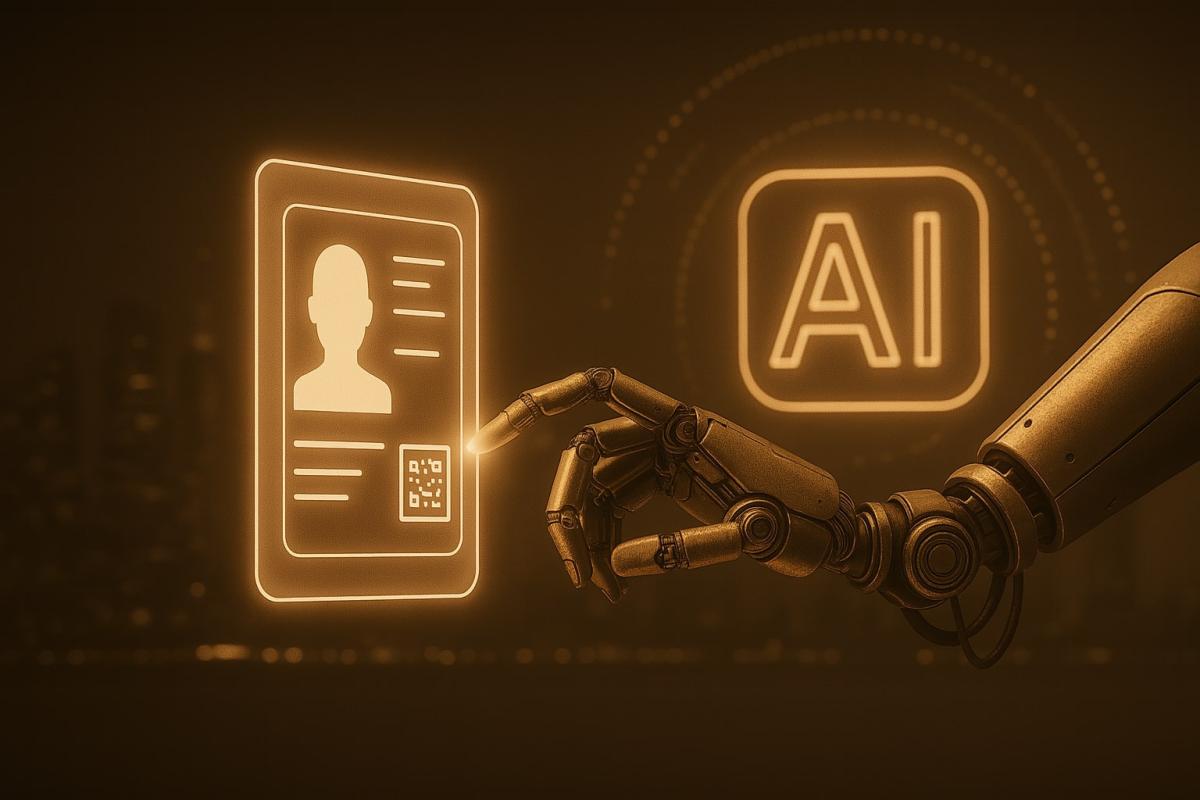Digital identity: what will our virtual ID look like in the future?
Digital identity is becoming an integral part of modern society. What does it reveal about us? How does it work today, and what might it look like in the future? From blockchain to virtual IDs – let's look at the technologies changing the way we verify ourselves and protect our privacy in the world.

It is no longer just about a password or an ID card. In the digital world, our identity transforms into something much greater – a key to unlocking access to services, communication, and personal privacy. What does digital identity look like today? And where is it heading in the future?
What is digital identity?
Let's first look at what digital identity actually is. In short, it is a set of information that uniquely identifies a person or entity in a digital environment.
It includes not only basic data, such as name, date of birth, or document number, but also digital footprints, such as:
- login credentials,
- biometric information,
- online activity history.
Currently, digital identity often manifests through various social media accounts, digital signatures, or electronic ID cards.
The importance of digital identity in the modern world
Our identity is no longer just about an ID card in a wallet. In the digital age, it increasingly intertwines with technologies – whether it’s access to online banking, logging into government services, or online voting. Simply put, identity is a key tool today enabling secure communication among individuals, companies, and institutions.
Moreover, we use it more often than we might realize – in the form of electronic ID cards (e.g., eID), biometric passports, or services like BankID. These tools connect the world of physical documents with digital technology. But this is where we also encounter limits – current systems tend to be fragmented, dependent on specific providers, and often do not function across boundaries.

How technologies shape the future of digital identity
The future of digital identity will likely be driven by a combination of advanced technologies ensuring greater security, flexibility, and user control. According to experts, key technologies include blockchain, biometrics, and artificial intelligence.
Blockchain and decentralized identity
Blockchain technology offers a promising approach to creating a decentralized digital identity (Self-Sovereign Identity, SSI). This concept allows individuals to store their identification data on a distributed network, where they have full control over who has access to them. Instead of relying on a central authority, such as a government or a bank, users can share only necessary data (e.g., age to enter a bar) without revealing their entire identity.
Biometric technologies
Next in line is biometric verification, such as fingerprint scans, facial recognition, or iris scans. In the future, biometrics are expected to become even more sophisticated, for example, through behavior analysis (such as typing patterns or mouse movements). These potentially increase security but also raise privacy concerns since biometric data cannot be changed like passwords.
Artificial intelligence and predictive security
We must not forget artificial intelligence (AI), which can play a role in protecting digital identity by analyzing behavior patterns and detecting suspicious activities. For example, AI can recognize when someone tries to log in from an unusual device or location and automatically require additional verification. In the future, AI could also help create dynamic identities that adapt to specific situations.
What will virtual ID look like?
The virtual ID of the future will not be just a digital version of a physical document, but a comprehensive platform for identity management. We can expect several key characteristics:
Unified and globally recognized identity
In the future, digital identity could be globally interoperable, meaning one identity system could be recognized across countries and platforms. For example, the European Union is already working on the eIDAS 2.0 initiative, which aims to create a unified framework for digital identity across Europe. This system could be extended to a global level, facilitating travel, work, and trade.
Greater user control
According to experts, decentralized systems based on blockchain will also emerge, allowing users to decide what data they share and with whom. For example, when purchasing alcohol, a user could share only the information that they are over 18, without revealing their name or address. This approach minimizes the risk of data breaches and increases privacy.

Integration with digital ecosystems
The virtual ID could also be linked to other digital services, such as health records, financial accounts, or even virtual reality and the metaverse. Digital identity could automatically verify your age, health insurance, and payment information when entering the virtual world or visiting an online clinic.
Security and resilience against attacks
Nonetheless, future digital identity systems must be resistant to cyberattacks. In addition to advanced encryption and biometric verification, they could include quantum-resistant algorithms that withstand attacks from quantum computers. This is crucial because, with increasing computing power, the risk of breaking current encryption standards also increases.
Digital identity also has its hidden sides
Although the future of digital identity is promising, it also brings a series of challenges. Among the biggest are privacy protection, inclusivity, and potential misuse.
Privacy protection
With the increasing amount of personal data stored online, the risk of misuse also grows. Decentralized systems can mitigate this risk, but only if they are designed with an emphasis on security and transparency. Users must be informed about how their data is used and who has access to it.
Inclusivity and accessibility
Another potential hurdle is the expectation that digital identity must be available to everyone, including those without access to modern technology or digital skills. In developing countries, where many people don't even have a physical ID, creating a digital identity will be an even greater challenge.
Surveillance and misuse risk
Unfortunately, centralized digital identity systems can be misused by governments or corporations for citizen surveillance. For example, some countries already have social credit systems that use digital identity to evaluate citizen behavior. Decentralized systems could mitigate this threat, but their implementation is technically demanding.
We have reached the end of our journey into the future of digital identity. As you can see, this phenomenon is rapidly becoming the backbone of modern society, and its development will have a significant impact on how we interact with technologies, institutions, and each other.
Wireless charging: What are its benefits, limitations, and where is it heading?

Wireless charging has evolved from a luxury feature to a standard part of most modern phones. Simply place your mobile on the pad, and energy begins to flow without searching for a cable and connector. We explain how wireless charging works, what it entails, and why Qi and Qi2 technologies have become the new standard of convenience.
What is Wi-Fi 7? What changes does it bring and when does it make sense to switch

Today's home Wi-Fi network is under increasing pressure. It has to handle video calls, online gaming, and dozens of smart devices. The new Wi-Fi 7 standard offers a solution that takes wireless connectivity to the next level. We'll explain what this standard means in practice and why it might be crucial for the future of home and business networks.
What is DNS? Everything you need to know about its functionality and setup

When you type a website address into the browser, the correct page loads in an instant. This is managed by the DNS system, without which the internet as we know it would not exist at all. In this article, you will learn what DNS is, how it works, what types of records it contains, and why it is important for both speed and security of the connection.
How does fiber optic internet work and what do you need for its installation?

Fast and stable connection is a basic necessity in every household today. The solution is fiber optic internet, which works differently than regular cables and offers greater reliability to users. We'll explain how this technology works in practice, what it entails to run a fiber optic cable to your home, and what equipment you’ll need to keep everything running smoothly.
Cloud gaming – the end of consoles in sight?

Cloud gaming allows you to play games from anywhere without the need for expensive hardware. In this article, you'll learn how game streaming works, what advantages and limitations it brings, and which services are leading the way today. And most importantly: can it really threaten traditional consoles?
Chips under the skin and in the head. The future is closer than we think

Brain microchips already allow controlling a computer with mere thoughts. In the article, you will learn how they work, what they have brought to the first users, and what promises scientists and Elon Musk associate with them. Along with hopes, questions about safety, ethics, and where this technology might take us also arise.